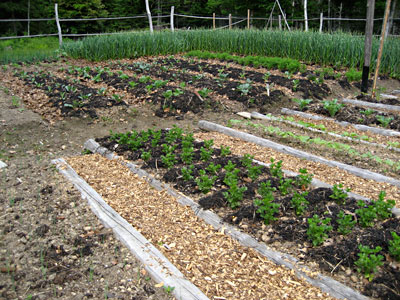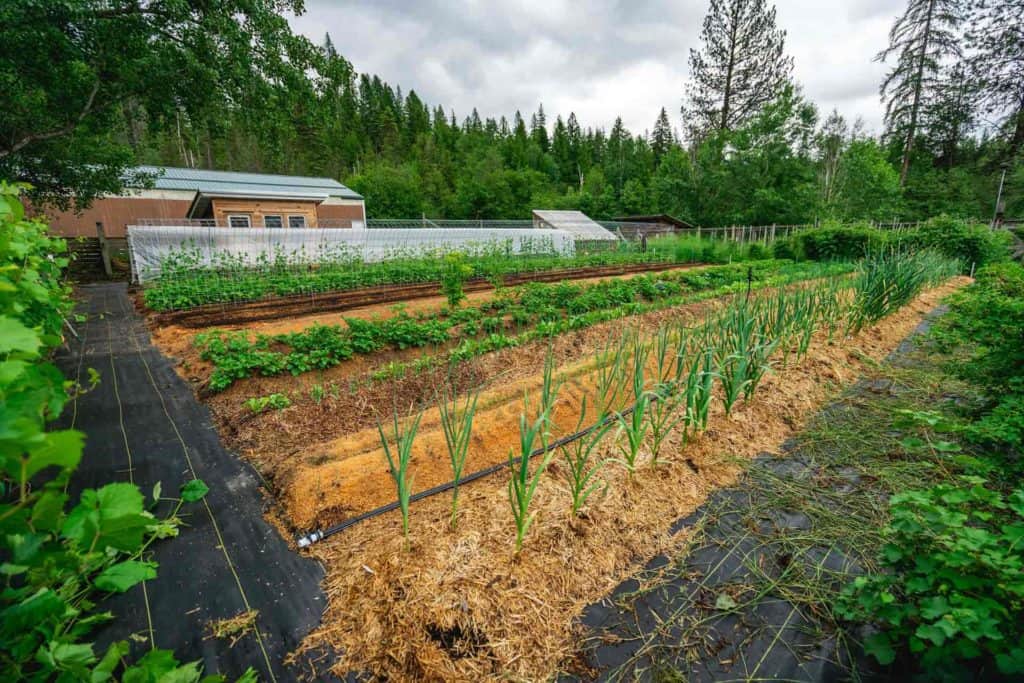What You Should Know About Homestead Gardening
What You Should Know About Homestead Gardening
Blog Article
Discover Essential Tips for Effective Gardening Techniques and Practices
Gardening, often viewed as an easy activity, includes a series of strategies and practices that can significantly affect the result of your efforts. By prioritizing important elements such as dirt wellness, efficient watering approaches, and ideal plant selection, garden enthusiasts can create a flourishing community that supports vibrant growth. Moreover, comprehending the subtleties of pest management and seasonal maintenance can further boost efficiency. Numerous lovers overlook essential information that can make or damage their gardening success-- checking out these forgot elements might reveal the key to cultivating a flourishing yard.
Comprehending Soil Health And Wellness
Soil wellness is an essential facet of successful horticulture, as it directly affects plant growth, nutrient accessibility, and ecosystem equilibrium. Healthy dirt is characterized by an abundant biodiversity of microbes, raw material, and a balanced pH degree, which together produce an environment for plant development.
To recognize dirt health and wellness, one should consider its physical, chemical, and organic properties. The structure and framework of soil impact its capacity to keep dampness and nutrients, while the chemical composition figures out the accessibility of essential aspects like phosphorus, potassium, and nitrogen. Regular soil testing is critical to assess these factors, allowing garden enthusiasts to make informed decisions pertaining to fertilizers and changes.
In addition, promoting organic task within the dirt is vital for maintaining its health and wellness. Practices such as composting, crop turning, and using cover plants can boost microbial variety, improve nutrient cycling, and decrease soil erosion. By prioritizing soil health and wellness, gardeners not only enhance plant growth however likewise add to a lasting ecological community, making certain that their horticulture techniques are resistant and eco liable with time.
Reliable Sprinkling Methods
Making sure that plants get the suitable amount of water is important for their health and wellness and development, especially when coupled with a solid foundation of dirt wellness (Homestead Gardening). Efficient watering techniques can significantly influence plant vigor, minimizing water waste and promoting optimum growth
One fundamental approach is deep watering, which motivates roots to expand deeper right into the soil, boosting drought resistance. This technique usually involves sprinkling less regularly but in bigger quantities, permitting moisture to pass through the root area completely. Timing is additionally important; morning is the suitable time to water, as it minimizes dissipation and allows foliage to completely dry throughout the day, lowering disease threats.
Additionally, utilizing compost can assist preserve soil wetness and manage temperature, additional assisting efficient sprinkling techniques. Utilizing a drip watering system can additionally provide targeted wetness straight to the roots, making certain that water gets to where it's most needed while preserving sources.
Keeping an eye on rains and soil wetness degrees can lead adjustments in your watering timetable, guaranteeing plants obtain regular hydration without over-saturation. By adopting these efficient sprinkling strategies, garden enthusiasts can foster a flourishing atmosphere for their plants to grow.
Plant Option and Placement
How can the ideal plant option and critical positioning transform a garden into a flourishing ecosystem? The harmony in between plant selections and their positioning is crucial for creating a dynamic garden. When choosing plants, think about aspects such as climate, soil type, and sunlight exposure. Native varieties are often the best choice as they are adapted to local problems and call for much less upkeep.
Strategic positioning includes setting up plants according to their growth habits and demands. Taller plants need to be placed at the back of borders to stop shielding shorter plants. Additionally, organizing plants with comparable water and light demands can boost their growth and lower competitors for sources.
Incorporating a variety of plants not just adds visual allure yet likewise promotes biodiversity, bring in useful insects and pollinators. Take into consideration the seasonal adjustments in your garden; pick a mix of perennials, evergreens, and annuals to ensure year-round rate of interest.
Lastly, bear in mind to evaluate the fully grown size of plants prior to planting to stay clear of overcrowding and make sure sufficient air circulation. Thoughtful plant selection and critical placement develop a harmonious atmosphere, permitting your garden to prosper while reducing obstacles.
Pest and Illness Management
Reliable bug and disease administration is important for preserving a healthy and balanced garden environment - Homestead Gardening. An aggressive technique, combining social, biological, and chemical techniques, can dramatically decrease the effect of pests and illness on your plants

Biological controls, her latest blog such as presenting helpful pests like ladybugs or predatory termites, can maintain pest populations in check without harming the atmosphere. Furthermore, preserving plant health and wellness with appropriate watering, fertilization, and pruning will reinforce their durability against diseases.
When intervention is necessary, select targeted chemical treatments, ensuring to follow application standards to decrease injury to non-target microorganisms. Constantly prioritize lasting techniques, as they promote long-term yard wellness and eco-friendly balance. By integrating these strategies, garden enthusiasts can properly take care of bugs and illness, guaranteeing thriving plants and an effective yard.

Seasonal Maintenance Practices
During each season, implementing targeted upkeep practices is essential for optimizing yard health and wellness and productivity. In spring, concentrate on soil preparation by screening pH levels and adding essential amendments. This is additionally the suitable time to apply fertilizers and compost to keep moisture and subdue weeds. On a regular basis examine emerging plants for parasites and illness.
As summer strategies, guarantee ample irrigation while monitoring for indications of stress or illness. Prune back thick plants to urge air flow and lower humidity around foliage. This technique not only enhances plant wellness yet additionally advertises blooming and fruiting.
With the arrival of autumn, it's time to prepare for winter. Tidy up dropped leaves and debris to prevent insect invasions, and consider growing cover crops to enhance soil wellness. This period is likewise ideal for splitting perennials and growing spring-flowering light bulbs.
Conclusion
Successful gardening depend upon the assimilation of sound practices in soil wellness, watering, plant choice, bug monitoring, and seasonal maintenance. By prioritizing soil testing and microbial variety, using reliable watering techniques, and choosing proper plants, garden enthusiasts can create prospering ecological communities. Additionally, proactive insect administration and thorough seasonal maintenance add dramatically to total yard vigor. Welcoming these strategies cultivates a productive and sustainable gardening environment, ensuring flourishing growth and resilience throughout the changing periods.
By focusing on necessary aspects such as soil health, reliable watering strategies, and appropriate plant option, gardeners can create a thriving ecosystem that sustains dynamic growth. By focusing on soil health, garden enthusiasts not only maximize plant growth but additionally contribute to a lasting community, guaranteeing that their Get More Information horticulture methods are environmentally liable and resilient over time.
Taller plants must be positioned at the back of boundaries to prevent shielding shorter plants. Clean up fallen leaves and debris to protect against insect problems, and think about growing cover crops to improve soil health and wellness.Successful gardening hinges on the assimilation of sound methods in soil health and wellness, watering, plant selection, bug management, and seasonal maintenance.
Report this page